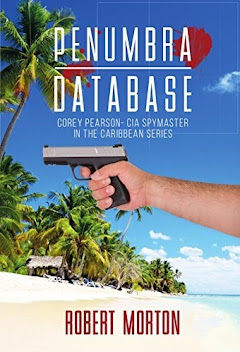 |
| Think spycraft is all cyber hacks? Think again. Dead drops are making a quiet but powerful comeback. |
The thing about spycraft is this: no
matter how slick our digital world gets, the old tricks never really die. Take
the dead drop. Sounds quaint, right? Like something out of a Cold War flick.
And you'd be right — James Bond himself stashed messages and gadgets in dead
drops more times than we can count. But here’s the kicker: it’s still happening
today. Same game, different players.
Take
the case of Xueha “Edward” Peng. For nearly three years, starting in 2015, this
56-year-old Chinese-American tour guide lived a secret double life. Every few
months, he’d quietly check into a specific hotel — first in California, later
in Georgia — but he wasn’t there for sightseeing.
His real mission followed a simple but
sneaky routine. Peng would bring along $10,000 or $20,000 in cash. He’d hide
the money somewhere in the hotel room — tucked in a dresser drawer, or taped
under a desk or TV stand. Then he’d leave.
After Peng’s drop, undercover FBI agents —
posing as his Chinese intelligence contacts — would come to the room. They’d
collect the cash, and in exchange, they’d plant an SD card in the same room.
The card would be hidden in a similar spot, sometimes tucked into an ordinary
object like a cigarette box. These SD cards contained what Peng believed were
classified U.S. secrets.
Once Peng retrieved the card, he’d board a
flight to Beijing and personally hand it over to his real handlers in China’s
Ministry of State Security.
In
reality, the FBI had set up the entire operation to catch him red-handed. It
was a textbook dead drop — no face-to-face meetings, just hidden exchanges
through secret drop points. Old-school spycraft, still effective in the modern
era.
Now, if you’re thinking this sounds ripped
from the pages of a spy thriller, you’re not wrong. In fact, this very dance of
cloak-and-dagger maneuvering mirrors scenes straight out of Shadow War,
where CIA spymaster Corey Pearson and his team depend on dead drops to stay
ahead of a Russian sleeper cell. In one nail-biting sequence, Pearson
orchestrates a drop in a grimy New York alley, slipping critical intel into an
innocuous package, right under the enemy’s nose. It’s old-school tradecraft,
but in this line of work, that’s what keeps you alive.
The beauty of a dead drop is its
simplicity. No risky face-to-face exchanges. No digital footprints for some NSA
analyst to follow. Just you, a secret location, and a carefully timed pickup.
FBI special agents call it a “method of spycraft used to pass items or
information between two individuals using a secret location thus not requiring
them to meet directly.”
It’s not glamorous, but it works. Aldrich
Ames and Robert Hanssen — two of the worst traitors in American intelligence
history — used dead drops religiously. Hanssen, for instance, would tuck
classified documents and disks into a trash bag, hide it beneath a footbridge
in a sleepy Northern Virginia park, and signal his Soviet handlers with a
simple piece of tape slapped on a signpost. Elegant in its paranoia.
Security pros like Runa Sandvik still
vouch for the method. Sure, encrypted emails and burner phones are great, but
they come with risks. You send something through the mail, you’re trusting a
third party. You meet in person, you’re risking surveillance. But a dead drop?
That’s control. Control over timing, control over access. Sandvik herself once
helped arrange a dead drop between a reporter and a confidential source.
Because when it comes to sensitive info, sometimes analog beats digital.
And let’s not kid ourselves — this isn’t
just relics of the past. The Shadow War spy thriller
nails it: in today’s high-tech chaos, Pearson and his team still rely on dead
drops as lifelines. As they race to stop a catastrophic biological attack,
every hidden package becomes a vital link in a chain of survival. In a world
where a misstep means disaster, dead drops provide a whisper of certainty.
So, yeah, Peng’s little hotel room errands
might seem like espionage for the nostalgic. But there’s a reason why, in the
ruthless game of spies, the old tools still find their way back into play. Dead
drops may be out of sight, but they’re far from obsolete.
Robert Morton is a member of the Association of Former Intelligence Officers (AFIO) and writes about the U.S. Intelligence Community (IC). The Corey Pearson- CIA Spymaster series blends his knowledge of real-life intelligence operations with gripping fictional storytelling. His work offers readers an insider’s glimpse into the world of espionage, inspired by the complexities and high-stakes realities of the intelligence community.





No comments:
Post a Comment